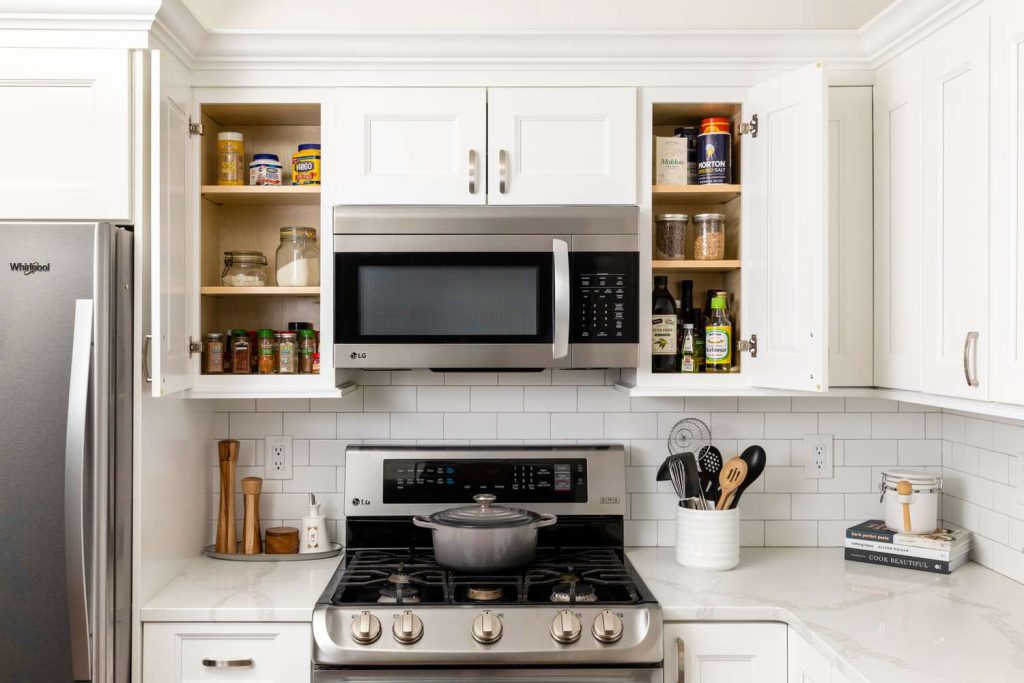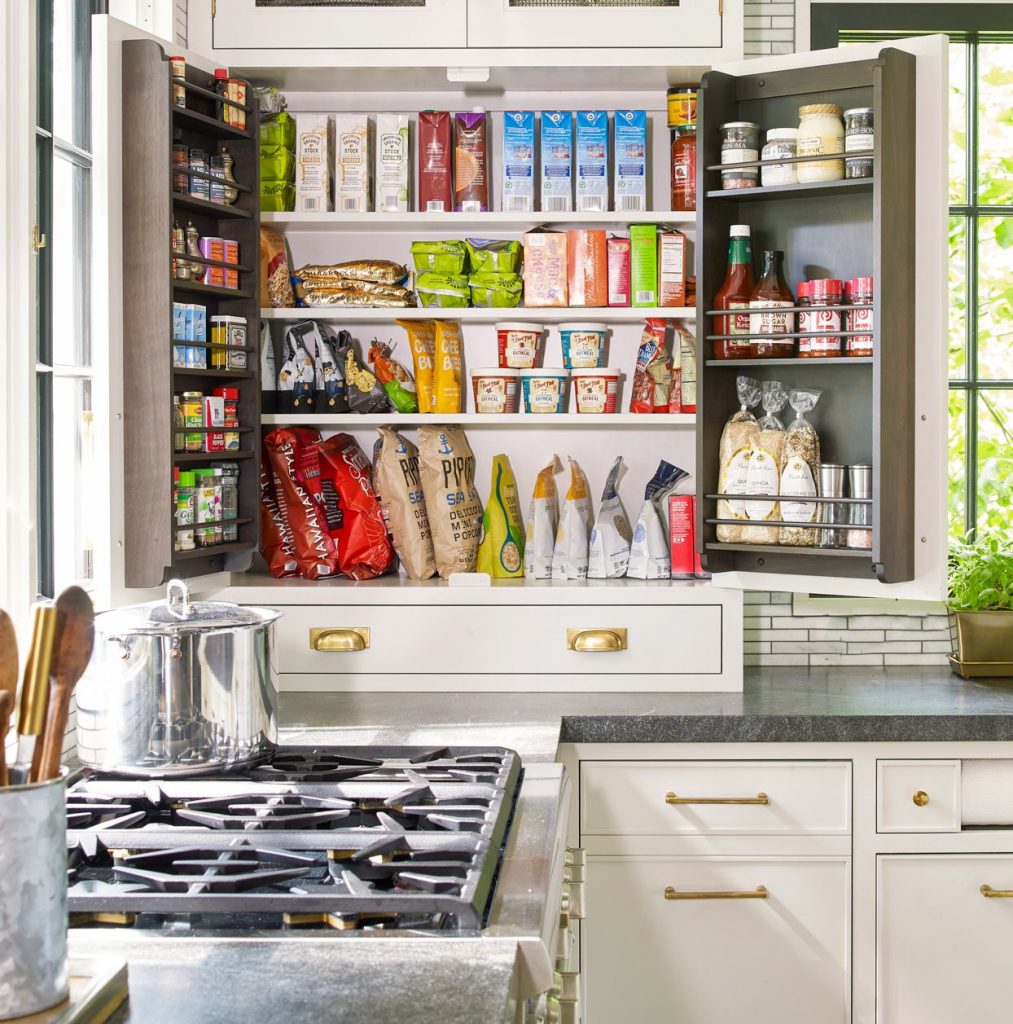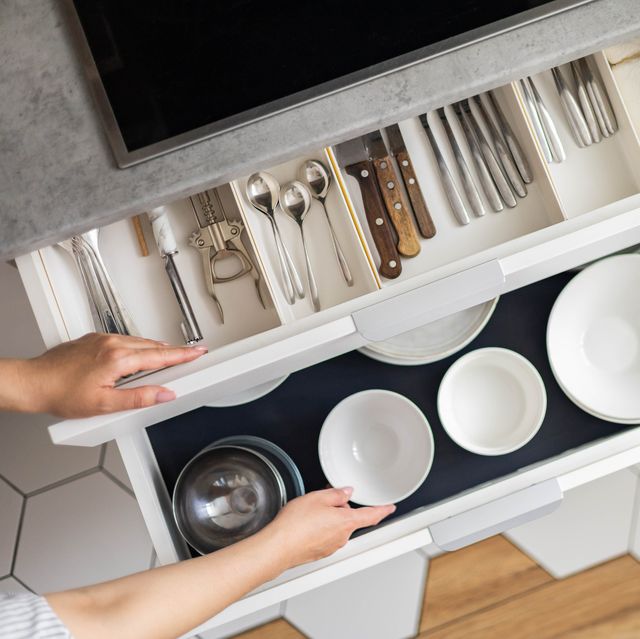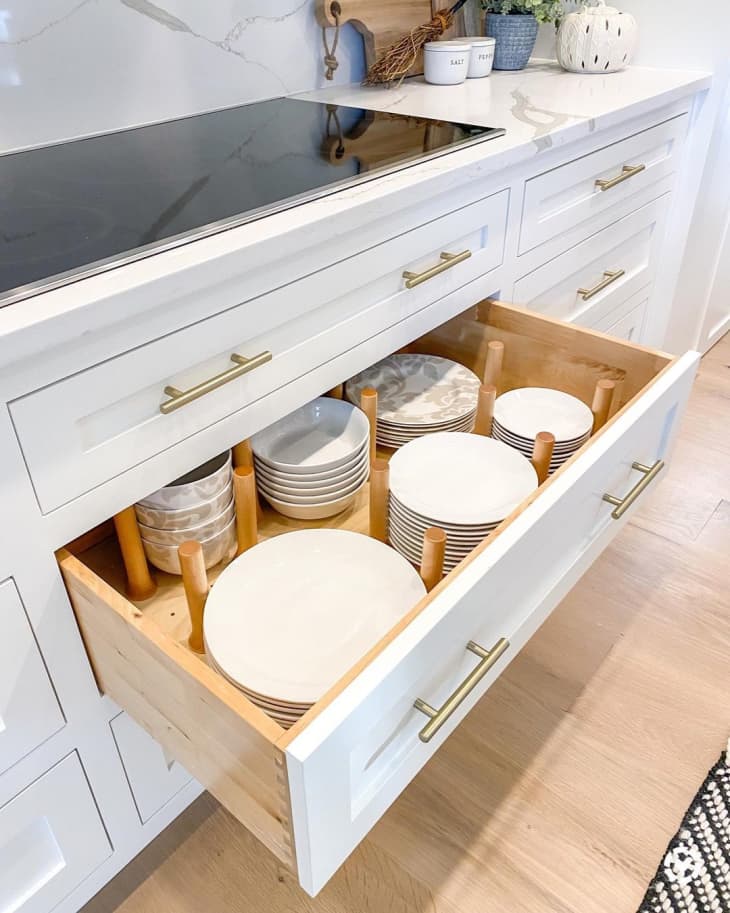You know how frustrating it can be when you’re trying to find a specific cooking utensil or spice in your kitchen drawers, only to discover everything is jumbled up and disorganized. Well, fear no more! In this article, we’ll show you some simple yet effective tips on how to organize your kitchen drawers in a way that not only makes it easier to find what you need, but also maximizes your storage space. Say goodbye to clutter and hello to a more functional and tidy kitchen!

Decluttering and Sorting
Remove unnecessary items
When organizing your kitchen drawers, the first step is to declutter and remove any unnecessary items. Take a good look at each drawer and evaluate if you really need all the items in it. Be honest with yourself and let go of things that you haven’t used in a while or that are broken beyond repair. By removing these unnecessary items, you’ll create more space and make it easier to organize and find the things you actually need.
Sort items into categories
Once you’ve decluttered, it’s time to sort the remaining items into categories. This will help you identify the types of dividers or organizers you might need for each drawer. Group similar items together, such as utensils, cooking tools, food storage containers, and baking supplies. By sorting and categorizing, you’ll be able to see what you have and determine the best way to store and arrange them for easy access.
Utilizing Drawer Dividers
Choose the right dividers
Drawer dividers are essential for keeping your kitchen drawers organized. They help prevent items from becoming jumbled together and make it easier to find what you’re looking for. When choosing dividers, consider the size and shape of your drawers, as well as the items you plan to store in them. Opt for adjustable dividers that can be easily repositioned as needed to accommodate different sizes. There are various types of dividers available, including ones specifically designed for utensils, cutlery, or larger cooking tools.
Separate items based on categories
Once you have the right dividers, it’s time to separate the items in your drawers based on the categories you established earlier. Use the dividers to create separate compartments for each category. For example, in a utensil drawer, you can have a section for forks, another for spoons, and one for knives. This segregation makes it easier to locate and retrieve specific items, saving you time and frustration when you’re in the midst of cooking or baking.
Adjust dividers as needed
As your needs change or items in your kitchen drawers evolve, it’s important to adjust the dividers accordingly. Don’t be afraid to rearrange or shift dividers to accommodate new items or make more space for existing ones. The goal is to create a system that works specifically for you and allows for flexibility as your kitchen needs may vary over time. Regularly reassess the organization of your drawers and make adjustments as necessary.
Arranging Utensils
Group similar utensils together
When arranging your utensils, group similar ones together. This helps to keep things organized and makes it easier to find what you need. For example, you can group all your spoons together, all your forks together, and all your knives together. This simple step can save you time and frustration when you’re trying to grab a specific utensil while cooking.
Consider frequency of use
Another factor to consider when arranging your utensils is their frequency of use. Place the utensils you use most often in easily accessible areas, while those you use less frequently can be stored towards the back or in a lower drawer. By organizing your utensils in this way, you’ll have the items you need within reach and won’t have to dig through cluttered drawers to find them.
Organize utensils by size or function
You can further enhance the organization of your utensils by arranging them by size or function. For example, within your spoon section, you can place tablespoons and teaspoons separately. This way, you won’t have to search through a jumble of utensils to find the specific size you need. Similarly, consider grouping utensils by function, such as separating cooking spoons from dessert spoons. This makes it easier to locate the utensil you require for a particular task.
Storing Cutlery
Invest in a cutlery tray
To keep your cutlery neat and organized, investing in a cutlery tray is a must. A cutlery tray provides individual compartments for knives, forks, spoons, and other cutlery items, ensuring they stay separated and organized. Look for a tray with adjustable compartments to accommodate different sizes and shapes of cutlery. With a designated place for each piece of cutlery, you’ll no longer have to fumble through a drawer to find a matching set or risk accidental cuts when searching for a knife.
Arrange cutlery in order
When placing cutlery in your tray, arrange it in a specific order. Start with the knives, followed by the forks and then the spoons. This arrangement allows for easy retrieval and helps maintain a consistent system. You may also choose to further organize each category of cutlery, such as arranging knives in size order or grouping different styles together. By establishing an order, you’ll always know where each type of cutlery belongs, making it effortless to put away clean dishes and find what you need during meal preparation.
Separate knives for safety
To ensure safety in your kitchen drawers, it’s vital to separate knives from other cutlery items. This prevents accidental injuries when reaching into the drawer. Many cutlery trays come with designated knife sections or slots to keep them safely stored and away from other utensils. If your cutlery tray doesn’t have this feature, consider using a knife block or blade guards to protect the blades and keep them separate from the rest of your cutlery.

Organizing Cooking Tools
Categorize tools by function
When organizing your cooking tools, it’s helpful to categorize them by function. Group together tools that are used for similar tasks, such as spatulas, tongs, and whiskers, for example. This organization method ensures that all the tools you need for a specific cooking technique are easily accessible and saves you from rifling through a jumble of utensils to find what you’re looking for.
Arrange frequently used tools for easy access
Within each category, arrange your cooking tools in a way that prioritizes frequently used ones. Place the tools you reach for most often towards the front or in a top drawer to make them easily accessible. Less frequently used tools can be stored towards the back or in lower drawers. By organizing your cooking tools in this manner, you’ll have the tools you need within reach and won’t have to waste time searching for them during hectic cooking sessions.
Consider hanging tools on hooks
If you have limited drawer space or prefer a visually appealing display, consider hanging some of your cooking tools on hooks. This not only creates a unique and decorative element in your kitchen but also keeps commonly used tools within arm’s reach. Install hooks on the inside of cabinet doors or on a dedicated wall-mounted rack, and hang tools such as ladles, whisks, and measuring spoons. This organization method will free up drawer space while also adding a touch of style to your kitchen.
Managing Food Storage Containers
Match containers with lids
One common frustration in many kitchens is the mismatch between containers and lids. To efficiently manage food storage containers, ensure that each container has a matching lid. This eliminates the hassle of searching for the correct lid when storing leftovers or packing lunches. If you have a large collection of containers, take the time to match them up and discard any singles that no longer have a matching lid. By maintaining a collection of containers with perfectly fitting lids, you’ll save time and frustration in the long run.
Nest containers to save space
Food storage containers can quickly take up a lot of space in your kitchen drawers. To maximize the limited drawer space available, consider nesting containers within each other. For example, stack smaller containers inside larger ones, creating a compact and organized storage solution. Nesting containers not only saves space but also keeps them together, so you won’t have to search for individual pieces when you need them.
Store lids separately
To further optimize your food storage container organization, store lids separately from the containers. Lids can easily become a tangled mess when stored with the containers, making it difficult to find the right match. Use a separate drawer or a plastic bin specifically designated for lids, and arrange them in a way that allows for easy identification and access. By separating the lids, you’ll streamline the process of retrieving and storing food containers, making it a breeze to pack away leftovers or prepare meals.

Organizing Baking Supplies
Group baking supplies together
When it comes to organizing your baking supplies, it’s best to keep them together in one dedicated drawer. This creates a designated space for all your baking essentials, making it easier to find what you need when you’re ready to bake. The drawer should be large enough to hold mixing bowls, measuring cups and spoons, whisks, pastry brushes, and any other baking-specific tools you may have.
Use clear containers or bins
Utilize clear containers or bins to store smaller baking supplies within the drawer. This helps to keep items contained, prevents them from rolling around or getting lost, and makes it easy to grab exactly what you need. Clear containers also allow for quick visual identification of supplies, reducing the time spent rummaging through the drawer in search of a specific item.
Label containers for easy identification
To improve organization within your baking drawer, consider labeling the clear containers or bins you use to store smaller baking supplies. Use labels or adhere small pieces of tape to each container, indicating the contents. This small step adds an extra level of convenience and allows you to quickly locate the item you need, especially when you’re in a rush or in the middle of a baking project.
Storing Spices
Organize spices in a spice rack or drawer insert
Spices can quickly become disorganized if not properly stored. To keep your spices neatly arranged and easily accessible, consider using a spice rack or drawer insert specifically designed for organizing spices. Spice racks can be wall-mounted or placed on a countertop, while drawer inserts fit perfectly within a kitchen drawer. Both options provide compartments or slots for individual spice jars, ensuring that each spice has its own designated spot.
Arrange spices alphabetically
When organizing your spices, arrange them alphabetically for effortless retrieval. This allows you to quickly locate the specific spice you need without having to search through an unordered jumble. Start with spices beginning with the letter “A” on one end of the rack or drawer, and continue in alphabetical order until you reach the end. This system simplifies the spice selection process and makes meal preparation more efficient.
Use labels or markings on containers
Ensure the organization and identification of your spices is foolproof by using labels or markings on the containers. Label each spice jar with its name or mark the lid or side of the container with the spice’s name using a marker. This further eliminates any confusion or guesswork when you’re in the midst of cooking or baking and need to identify a particular spice quickly.

Managing Miscellaneous Items
Allocate a specific drawer for miscellaneous items
In every kitchen, there are always miscellaneous items that don’t fit neatly into a specific category. To manage these miscellaneous items effectively, allocate a specific drawer solely for their storage. This drawer becomes a catch-all for small tools, gadgets, or kitchen accessories that don’t have a designated spot elsewhere. Having a designated drawer ensures that these miscellaneous items don’t clutter up other drawers, making it easier to find what you need when you’re looking for something specific.
Keep small tools or gadgets organized
Within the miscellaneous drawer, it’s important to keep small tools or gadgets organized. Utilize small containers or trays to corral similar items together. For example, you can have a container for measuring spoons, another for bottle openers, and a tray for miscellaneous cords or clips. By grouping similar items and containing them within separate containers, you’ll prevent them from becoming tangled or scattered throughout the drawer.
Use small containers or trays
To further enhance the organization within the miscellaneous drawer, use small containers or trays to create individual compartments for specific items. This enables you to group related items together and prevents them from shifting or mingling when you open and close the drawer. With separate compartments, you’ll be able to easily find and retrieve the specific miscellaneous item you’re looking for, without having to sift through a jumble of various items.
Maintaining Regular Cleaning and Maintenance
Regularly clean drawers and dividers
To keep your kitchen drawers functioning optimally, it’s essential to regularly clean them. Remove all items from the drawers and wipe down the surfaces with a damp cloth or designated cleaning solution. Take the opportunity to also clean the dividers and organizers you have in place. Regular cleaning not only keeps your drawers looking tidy but also prevents the build-up of dirt, crumbs, or spills that can make it more challenging to retrieve items or keep your kitchen hygienic.
Review and declutter periodically
Periodically reviewing and decluttering your kitchen drawers ensures that you’re only keeping items that you truly need and use. Set aside time every few months to go through each drawer and evaluate the items within it. Ask yourself if there are any items you haven’t used in a while or that no longer serve a purpose in your kitchen. Letting go of these unnecessary items frees up space and makes it easier to maintain an organized system.
Adapt and adjust organization system as needed
Throughout time, your kitchen needs and preferences may change. Be willing to adapt and adjust your organization system as needed to accommodate these changes. If your cooking style or utensil collection evolves, consider rearranging the dividers or reorganizing the items within the drawers. Stay open to exploring new organization methods or investing in additional storage solutions that will enhance the functionality and efficiency of your kitchen drawers.
In conclusion, organizing your kitchen drawers effectively requires a systematic approach that starts with decluttering and sorting. Utilizing drawer dividers that are suitable for your needs is crucial, as is arranging the items within the drawers based on categories or specific criteria. Whether it’s utensils, cutlery, cooking tools, food storage containers, baking supplies, spices, or miscellaneous items, each category requires its own strategies for organization. Regular cleaning, periodic decluttering, and flexibility in adapting to changing needs are also key elements in maintaining an organized kitchen. With these tips and techniques, you’ll be able to transform your kitchen drawers into efficient and functional spaces that make meal preparation a breeze.

